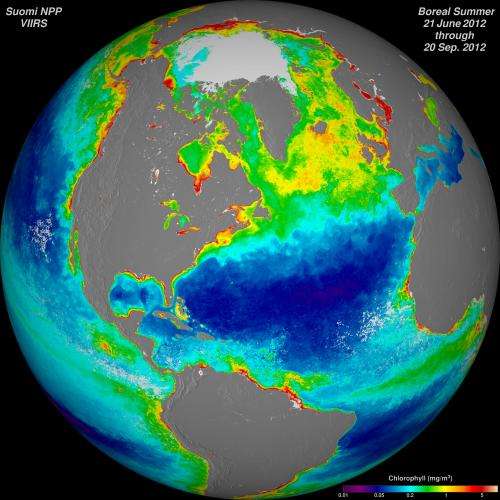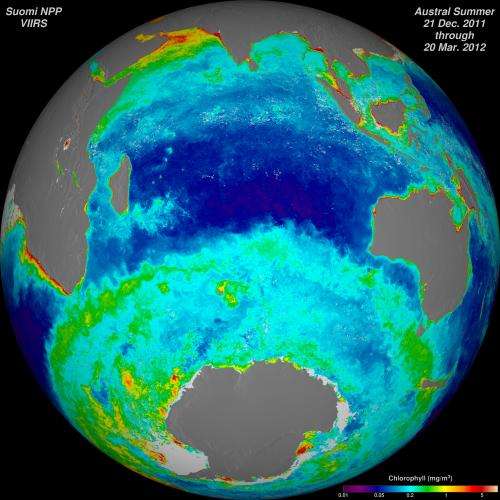Storms, ozone, vegetation and more: NASA-NOAA Suomi NPP satellite returns first year of data

On Oct. 28, 2011, the Suomi National Polar-orbiting Partnership (NPP) satellite successfully blasted into orbit in a spectacular night launch from Vandenberg Air Force Base, Calif. Now, Suomi NPP has orbited the Earth more than 5,000 times and begun returning images and data that provide critical weather and climate measurements of the complex Earth system.
"The Suomi NPP flight and ground teams have spent the first year making sure the spacecraft, instruments and data products are working well. As the instruments and data products have successfully checked out, the data go out to users," says James Gleason, Suomi NPP project scientist at NASA's Goddard Space Flight Center in Greenbelt, Md.
"These data help us improve our computer models that predict future environmental conditions," Gleason adds. "Better predictions let us make better decisions, whether it is as simple as taking an umbrella to work today or as complex as responding to a changing climate."
Suomi NPP observes Earth's surface twice every day, once in daylight and once at night. The spacecraft flies 512 miles (824 kilometers) above the surface in a polar orbit, circling the planet about 14 times a day. Suomi NPP sends its data once an orbit to the ground station in Svalbard, Norway, and continuously to local direct broadcast users.
Named for satellite meteorology pioneer Verner Suomi, the Suomi NPP mission is managed by NASA with the National Oceanic and Atmospheric Administration (NOAA) providing operational support and NOAA's Joint Polar Satellite System (JPSS) managing the satellite's ground system.

"Suomi NPP provides NOAA with the highest quality satellite data for critical operational products and services, such as weather forecasts, climate and ecosystem assessments," says Mitch Goldberg, NOAA's JPSS program scientist. NPP is the precursor satellite for the upcoming series of JPSS Earth-observing satellites.
What makes Suomi NPP such a powerful tool is the wide range of important observations it makes with its five instruments. These instruments send back data that allow scientists to see the entire globe from space and further understand oceans, clouds, ozone, snow, ice, vegetation and atmosphere.
Suomi NPP's five instruments include:
"Suomi NPP is a foundational satellite that offers an abundance of observations, plus it's sustaining a program of advanced observations," says Goldberg. "This is critical for long-term data continuity."
This fully functional satellite bridges more than a decade of observations by NASA satellites鈥擭ASA's Earth Observing System鈥攖o the next generation of U.S. Earth-observing satellites鈥擩PSS.
JPSS, currently under development, is building on the success of Suomi NPP and will provide critical observations for accurate weather forecasting, reliable severe storm outlooks, and climate science, including global measurements of atmospheric, oceanic, and terrestrial conditions such as sea surface temperatures, ozone, vegetation, and more.
More information:
More images:
Provided by NASA



















